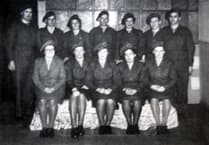Continuing our look back at local recipients of the British Military's highest honour, the Victoria Cross, this week we turn our attention to a hero of the Royal Navy buried in All Saint's Churchyard, Crondall: Vice-Admiral Gordon Campbell.
Born in Croydon, Surrey, on January 6, 1886, Campbell’s early years were marked by promise.
Educated at Dulwich College, he joined the Royal Navy at 16, serving aboard HMS Irresistible as a midshipman. His rapid rise through the ranks culminated in his command of ‘Q ships’ - vessels disguised as merchant ships to lure enemy submarines.
It was during the First World War, on February 17, 1917, that Campbell’s heroism earned him the Victoria Cross “for services in action with enemy submarines”.
Commanding HMS Farnborough, disguised as ‘Q.5’, he orchestrated a daring trap in the North Atlantic. Allowing a German U-boat torpedo to strike his ship, Campbell and his crew staged a convincing evacuation.
When the enemy surfaced, HMS Farnborough sprang into action, unleashing a devastating barrage that sank SM U-83. Despite significant damage to his ship, Campbell ensured its safe recovery.
His bravery did not end there. Later in 1917, while commanding HMS Dunraven, Campbell faced another U-boat attack. Though Dunraven was sunk, Campbell’s leadership earned two crew members Victoria Crosses and himself another Bar to his Distinguished Service Order.
Rising to vice-admiral, Campbell’s career extended beyond naval service. He was elected MP for Burnley in 1931 and recalled to naval duties in the Second World War to oversee anti-invasion measures. A prolific writer, his memoir My Mystery Ships remains a testament to his adventurous spirit.
Campbell passed away in 1953, but his legacy endures. His Victoria Cross is displayed at Dulwich College, a symbol of his extraordinary gallantry.





Comments
This article has no comments yet. Be the first to leave a comment.